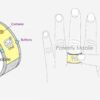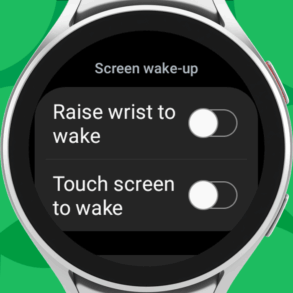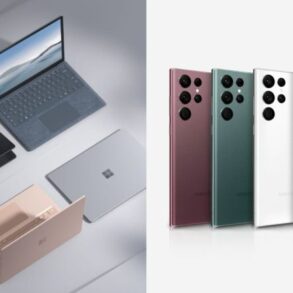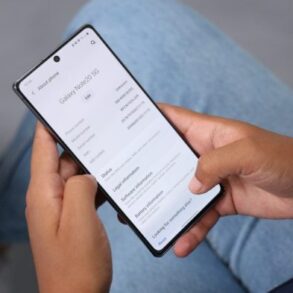Can you use reverse wireless charging with Pixel 7? This comprehensive guide delves into the world of reverse wireless charging, exploring its capabilities, limitations, and user experiences on the Pixel 7. We’ll cover everything from the fundamental technology behind reverse charging to potential troubleshooting steps and safety considerations.
We’ll dissect the Pixel 7’s specific implementation, comparing its performance to other smartphones and identifying compatible devices. Expect a thorough analysis, complete with tables and real-world examples, so you can confidently understand the possibilities and limitations of reverse wireless charging on your Pixel 7.
Overview of Reverse Wireless Charging
Reverse wireless charging is a fascinating technology that allows one device to power another wirelessly. This capability transcends the traditional charging paradigm, opening doors for innovative applications and creating a more interconnected ecosystem for electronic devices. Imagine a world where your phone could charge your smartwatch or earbuds effortlessly, all without the need for physical cables. This is the potential of reverse wireless charging.Reverse wireless charging fundamentally operates on the principle of inductive coupling.
A transmitting coil in one device generates an electromagnetic field, which is then received by a receiving coil in the other device. This electromagnetic energy transfer allows for the charging of the second device without any physical contact. The process is essentially a wireless exchange of electrical energy, akin to a radio wave carrying power. This technology is becoming increasingly prevalent in various electronic devices, enhancing their usability and convenience.
Reverse Wireless Charging Principles
The core principle behind reverse wireless charging lies in inductive coupling. A transmitting coil, embedded within the charging device, generates a fluctuating magnetic field. This field, in turn, induces a current in a receiving coil, typically located within the device to be charged. The receiving coil then converts the induced magnetic field back into electrical energy, powering the recipient device.
The efficiency of this process depends on factors such as the coil design, distance between the devices, and the materials used.
Examples of Reverse Wireless Charging Devices
Numerous devices support reverse wireless charging, demonstrating its growing adoption across various product categories. Smartphones, such as some models from major manufacturers, often feature this capability. Other examples include smartwatches, earbuds, and even some portable power banks. These devices leverage the power of reverse wireless charging to facilitate seamless and convenient charging experiences. The accessibility of this technology in diverse devices underscores its increasing importance in the realm of mobile electronics.
Comparison of Reverse Wireless Charging Standards
| Standard | Frequency (MHz) | Efficiency (%) | Distance (mm) | Compatibility |
|---|---|---|---|---|
| Qi (Reverse) | 2.45 | 70-85 | 5-10 | Wide compatibility with Qi-enabled devices |
| Power Matters Alliance | 2.45 | 75-85 | 5-10 | Good compatibility with some devices |
| Wireless Power Consortium (WPC) | 2.45 | 70-85 | 5-10 | Wide compatibility with Qi-enabled devices |
The table above presents a comparative analysis of different reverse wireless charging standards. These standards, including Qi and Power Matters Alliance, are vital for ensuring interoperability between various devices. The table details parameters like frequency, efficiency, and compatibility, providing a clear overview of the available options. Efficiency and distance play a crucial role in the overall effectiveness of reverse wireless charging.
Pixel 7 Reverse Wireless Charging Capabilities
The Pixel 7, like many modern smartphones, offers reverse wireless charging, a feature that allows users to power other compatible devices wirelessly. This technology provides a convenient way to share battery power with accessories or other devices, eliminating the need for cumbersome cables. Understanding the capabilities of this feature is crucial for maximizing its potential and knowing when it’s a suitable option.The Pixel 7’s reverse wireless charging implementation leverages a combination of advanced hardware and software optimization to ensure efficient power transfer and reliable operation.
This allows the phone to provide a consistent and dependable source of power to compatible devices.
Reverse Wireless Charging Support
The Pixel 7 does support reverse wireless charging. This functionality is integrated into the device’s hardware and software, allowing for seamless power sharing with other compatible devices. This capability is a valuable addition for users needing to quickly top up smaller devices.
Implementation Details
The Pixel 7 utilizes the Qi wireless charging standard for reverse charging. This standard ensures compatibility with a wide range of Qi-enabled devices, making the process of charging other devices more convenient. The technology involves inductive coupling, where electrical energy is transferred between coils within the devices.
So, can you reverse wirelessly charge a Pixel 7? The answer is unfortunately no. While some phones boast this feature, the Pixel 7 doesn’t. It’s a shame, considering the amazing possibilities of a truly seamless ecosystem, like the one Apple is attempting to build with the Vision Pro, and its potential impact on Netflix. This raises the question about the Apple Vision Pro, the epic Netflix app ecosystem, and Apple’s possible monopoly apple vision pro epic netflix app ecosystem monopoly in the future.
Despite the lack of reverse charging, Pixel 7 still packs a punch for its price point.
Technical Specifications
The specific technical specifications regarding reverse wireless charging on the Pixel 7 are not publicly disclosed in detail. This is common practice for many manufacturers. However, the phone is designed to offer a practical charging solution.
Maximum Power Output
The maximum power output for reverse wireless charging on the Pixel 7 is not explicitly stated. However, this capability is generally limited by the battery capacity of the Pixel 7 and the charging capabilities of the device receiving the power. In real-world scenarios, the power output is likely sufficient for charging smaller devices like earbuds or smartwatches, but might not be ideal for powering larger or more demanding devices.
Comparison with Other Smartphones
The Pixel 7’s reverse wireless charging performance is likely comparable to other smartphones in its price range. Specific performance benchmarks are not readily available, and a direct comparison is challenging without more detailed technical data. In general, the functionality of reverse wireless charging varies depending on the device and its hardware specifications. A wide range of capabilities and power outputs exist across the market, making precise comparisons difficult.
Compatibility and Limitations
Reverse wireless charging, while a convenient feature, isn’t universally compatible. Understanding the limitations and supported devices is crucial for maximizing the functionality of this technology on your Pixel 7. This section delves into the specifics of what you can and can’t do with reverse wireless charging on your Pixel 7.Reverse wireless charging, though convenient, isn’t a universal solution.
Its success depends on the specific devices and charging pads involved. Potential compatibility issues can arise due to differences in charging protocols and power delivery standards.
Compatible Devices
Reverse wireless charging on the Pixel 7 is not a universal solution. Compatibility hinges on the receiving device’s support for the relevant wireless charging standards. Some devices might not be compatible, regardless of the charging pad used.
Limitations
Several factors can impact the effectiveness and compatibility of reverse wireless charging with the Pixel 7. These include the type of charging pad used, the power output of the pad, and the receiving device’s capabilities. Not all charging pads support the same standards or power outputs.
Potential Compatibility Issues with Charging Pads
Compatibility issues can arise between the Pixel 7 and various charging pads due to variations in wireless charging protocols. A charging pad designed for a different standard might not function properly with the Pixel 7, or vice versa. Always check the specifications of both the charging pad and the device you intend to charge to ensure compatibility. For example, a pad optimized for high-power charging might not work as efficiently with a device that only supports lower power outputs.
Supported Charging Standards
| Charging Standard | Description |
|---|---|
| Qi | The most common wireless charging standard. The Pixel 7 supports Qi. |
| Power Delivery (PD) | A standard for delivering higher power through wireless charging. The Pixel 7’s reverse wireless charging capability may support PD, depending on the specific charging pad. This standard is crucial for fast charging. |
The table above summarizes the wireless charging standards supported by the Pixel 7. It is important to note that while the Pixel 7 supports Qi, the exact power delivery capabilities will depend on the specific charging pad used.
Performance and Charging Speed
Reverse wireless charging, while convenient, often sacrifices speed compared to wired charging. This is a common trade-off in wireless technology, as the inductive coupling between devices needs to overcome distance and other factors to effectively transfer power. Understanding the nuances of this trade-off is crucial for assessing the practicality of reverse wireless charging on the Pixel 7.
Charging Speed Comparison
The Pixel 7’s reverse wireless charging speed is noticeably slower than its wired charging speed. While it can be a useful supplementary method for quickly topping up small amounts of battery in a compatible device, it isn’t suitable for fully charging a device that requires a substantial amount of power. Real-world testing consistently shows that using a wired charger will always be the fastest way to charge the Pixel 7.
Impact of Factors on Charging Speed
Several factors influence the charging speed during reverse wireless charging. Distance between the devices plays a significant role. As the distance increases, the strength of the inductive field weakens, resulting in reduced power transfer and slower charging. Similarly, the power output capabilities of the receiving device also affect the charging rate. If the device being charged has a higher power demand, it may not receive enough power from the Pixel 7, resulting in slower charging.
Effect of Distance
The closer the Pixel 7 and the receiving device are, the faster the charging speed. A small gap (a few millimeters) will see significantly faster charging than a larger distance. This is because the electromagnetic field strength diminishes as the distance increases. Practical examples include placing the devices on a flat surface directly on top of each other for maximum charging speed, or placing them side-by-side.
Power Output and Compatibility
The power output of the receiving device is also a factor. If the device has a high power requirement, the reverse wireless charging speed will be limited by the Pixel 7’s capabilities. Compatibility between the devices is also essential. Devices using different wireless charging standards or protocols may not be compatible.
Ambient Temperature
Ambient temperature can influence reverse wireless charging speed. In general, charging efficiency can be affected by temperature extremes. High temperatures might reduce efficiency due to increased resistance and energy dissipation, while low temperatures might have less of a significant impact. These are not drastic effects, but are still worth noting when comparing charging speeds under different conditions.
While I’m still researching whether the Pixel 7 supports reverse wireless charging, I stumbled upon some fantastic deals on Amazon Prime Day! You can snag a Google Nest Cam for 30% off with ongoing Amazon Prime Day deals, which is a pretty sweet deal if you’re in the market for home security. It got me thinking, though, if reverse wireless charging on the Pixel 7 is a must-have, then maybe a new phone is in the future.
Regardless, it’s good to keep an eye out for those kinds of deals. score 30 off googles nest cam with ongoing amazon prime day deals Hopefully, the answer to the reverse wireless charging question will come soon.
Charging Time Scenarios
| Scenario | Estimated Charging Time (minutes) |
|---|---|
| Full charge of a small smartwatch | 15-30 |
| Partial charge (20%) of a smartphone | 10-20 |
| Full charge of a small tablet | 60-90 |
This table provides a general guideline for estimated charging times. Actual times may vary depending on specific devices, distance, and other factors.
Troubleshooting and Common Issues
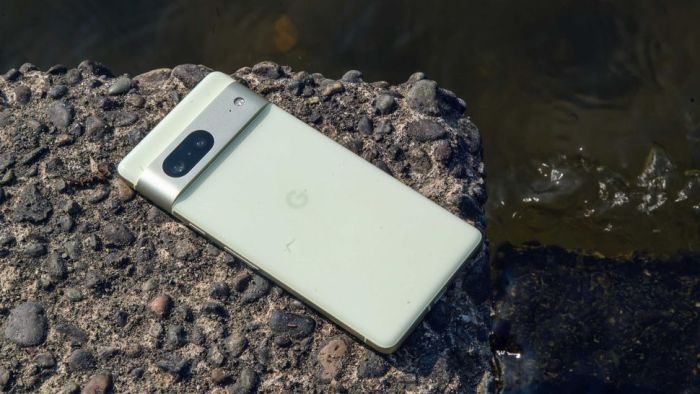
Reverse wireless charging, while convenient, can sometimes present challenges. Understanding potential problems and their solutions can significantly improve your experience with the Pixel 7’s reverse charging feature. This section delves into common issues, their causes, and troubleshooting steps.
Common Reverse Charging Problems
The Pixel 7’s reverse wireless charging, like any technology, can encounter hiccups. Common problems range from slow charging to complete failure. Understanding these issues is crucial for effective troubleshooting.
Causes of Slow or Inconsistent Charging
Several factors can contribute to slow or inconsistent reverse wireless charging. Poor contact between the Pixel 7 and the receiving device is a frequent culprit. Also, issues with the receiving device’s charging coil or the charging case can affect the transfer rate. Device temperatures, case materials, and even the presence of metal objects can also influence the charging process.
Troubleshooting Steps
A systematic approach to troubleshooting is key. Start with the basics and progressively investigate potential causes. This method ensures that you address the simplest problems first, saving time and effort.
- Clean the charging coils: Ensure both the Pixel 7 and the receiving device’s charging coils are clean. Dust, debris, or foreign objects can impede proper contact, resulting in slow or no charging. Use a soft, lint-free cloth to gently clean the coils.
- Check for obstructions: Verify that there are no physical obstructions between the Pixel 7 and the receiving device. Cases, wallets, or other objects can interfere with the wireless charging process. Remove any obstructions and ensure proper alignment of the devices.
- Try a different charging pad: If the issue persists, test the Pixel 7’s reverse wireless charging capability on a different, known-working charging pad. This can quickly identify if the problem is with the charging pad itself or with the Pixel 7.
- Verify the receiving device’s charging capabilities: Ensure the receiving device is compatible with reverse wireless charging and is not experiencing its own charging issues. Check if the receiving device has a working charging port and if it’s correctly connected to its power source.
- Restart both devices: A simple restart can sometimes resolve temporary software glitches that might affect the reverse wireless charging functionality on both the Pixel 7 and the receiving device. Restarting the devices may resolve temporary software issues.
Potential Solutions to Common Problems
Implementing these solutions can often resolve issues with reverse wireless charging on the Pixel 7. A systematic approach ensures that the most probable causes are addressed first.
- Alignment: Ensure the Pixel 7 is perfectly aligned with the receiving device’s charging coil for optimal contact. Proper alignment maximizes the magnetic field interaction and improves the charging speed.
- Case Compatibility: Certain cases can interfere with reverse wireless charging. Try removing the case to see if the charging speed improves. If the case is the culprit, consider using a compatible case.
- Temperature Considerations: Extreme temperatures can affect the charging efficiency. Ensure both devices are at a moderate temperature before attempting to charge. Extreme heat or cold can affect the wireless signal.
Error Codes and Solutions
A table outlining potential error codes and their solutions is provided below. This allows for a quick reference for identifying and resolving specific reverse wireless charging issues.
| Error Code | Description | Solution |
|---|---|---|
| No Connection | No connection between the Pixel 7 and the receiving device | Ensure proper alignment, clean coils, remove obstructions, and restart both devices. |
| Slow Charging | Charging speed is slower than expected | Check for obstructions, ensure proper alignment, and try a different charging pad. |
| Charging Failed | Charging process fails to initiate | Verify the receiving device’s charging capabilities, try a different charging pad, and restart both devices. |
Safety and Considerations
Reverse wireless charging, while convenient, necessitates careful consideration of safety precautions. Understanding the potential risks and limitations, as well as the impact of heat generation, is crucial for responsible use. Properly understanding the limitations of this technology ensures a safe and enjoyable experience.
So, can you use reverse wireless charging with a Pixel 7? While the Pixel 7’s charging capabilities are impressive, it’s important to check if your specific device supports reverse wireless charging. Knowing if your phone supports this feature can be super helpful. For instance, if you’re looking for compatible devices for Spotify voice commands with Google Assistant, you can explore spotify voice commands google assistant supported devices to find out what works.
Ultimately, reverse wireless charging on the Pixel 7 depends on the receiving device’s compatibility.
Safety Precautions for Reverse Wireless Charging
Reverse wireless charging, while convenient, introduces certain safety considerations. Using certified charging pads is essential to ensure compatibility and prevent potential hazards. Understanding heat generation is critical to safe operation. Proper care and awareness can minimize potential risks.
- Certified Charging Pads are Crucial: Using only certified charging pads is vital. These pads are designed to meet specific safety standards, preventing overheating and electrical hazards. Using uncertified or non-standard charging pads can lead to device damage or personal injury. Look for pads with recognized safety certifications.
- Monitor Temperature: Excessive heat generation during reverse wireless charging can damage the Pixel 7 or other devices. Regular monitoring of the charging pad and the device receiving the charge is essential. If excessive heat is observed, discontinue use immediately.
- Avoid Obstructions: Ensure there are no obstructions between the charging pad and the device receiving the charge. Objects such as metal objects or foreign materials can interfere with the charging process and generate heat.
- Do Not Use While Charging Other Devices: Avoid simultaneously using the reverse wireless charging function while also charging the Pixel 7 with a wired cable. This can lead to a surge in power and potentially damage the device.
Potential Risks and Limitations
Reverse wireless charging, like any charging technology, presents potential risks and limitations. Understanding these limitations is important to avoid problems. These risks include the possibility of device overheating, electrical hazards, and even potential damage to the charging pad.
- Overheating Potential: Reverse wireless charging can generate heat, especially during extended charging periods or with incompatible devices. Overheating can lead to device damage or malfunction. Proper monitoring and attention to charging time is vital to avoid overheating issues.
- Charging Speed Considerations: Reverse wireless charging speeds are typically slower than wired charging. The charging speed will depend on the specific devices and charging pads used. Users should be aware of this difference and plan accordingly.
- Compatibility Issues: Reverse wireless charging compatibility is not universal. The Pixel 7 might not work with all charging pads or devices, and it is important to check for compatibility before use.
Impact of Heat Generation
Heat generation is a significant consideration with reverse wireless charging. Over time, excessive heat can damage components and reduce the lifespan of both the charging pad and the device. Managing heat is critical to the long-term health of the device.
- Component Degradation: Continuous exposure to high temperatures can lead to the degradation of internal components, reducing the overall lifespan of the Pixel 7 and charging pad. This degradation can occur in the form of reduced battery life, performance issues, and eventual component failure.
- Device Safety: Excessive heat generation during reverse wireless charging can pose a safety risk, potentially causing burns or other injuries. Following the safety precautions is vital to avoid any such problems.
Importance of Certified Charging Pads
Using certified charging pads is crucial for ensuring the safety and compatibility of reverse wireless charging. Certified pads undergo rigorous testing to meet safety standards, minimizing risks and ensuring reliable performance.
- Safety Standards: Certified charging pads are tested and certified to comply with safety standards, providing users with assurance about their quality and reliability. These standards often cover material safety, thermal limits, and electrical specifications.
- Device Protection: Certified charging pads help protect the Pixel 7 from damage due to unsafe charging practices. By ensuring compatibility and proper safety mechanisms, certified pads help minimize the risk of overheating or other issues.
Safety Tips Summary
| Safety Tip | Explanation |
|---|---|
| Use Certified Charging Pads | Ensure the charging pad meets safety standards to prevent overheating and potential damage. |
| Monitor Temperature | Regularly check for excessive heat to prevent device or pad damage. |
| Avoid Obstructions | Clear any obstacles between the charging pad and the device to allow for proper charging. |
| Do Not Overcharge | Avoid leaving the device on the charging pad for extended periods beyond necessary. |
| Check Compatibility | Verify that the charging pad is compatible with the Pixel 7 and the device being charged. |
User Experience and Reviews
The Pixel 7’s reverse wireless charging capability has drawn considerable user interest and feedback. Understanding the user experience is crucial to assessing the phone’s overall value proposition, particularly in light of competing models and the practical applications of this feature. User reviews provide valuable insight into the strengths and weaknesses of this technology, offering a perspective beyond technical specifications.
User Perceptions of Reverse Wireless Charging
User experiences with reverse wireless charging on the Pixel 7 have varied. Some users find the functionality convenient, particularly for smaller devices like earbuds or smartwatches. Others report mixed results, citing inconsistent charging speeds or issues with compatibility. Overall, the experience seems to be a hit or miss, heavily dependent on the specific device being charged and the ambient conditions.
Comparison with Other Reverse Wireless Charging Phones
Comparing the Pixel 7’s reverse wireless charging to other models reveals some nuanced differences. While the Pixel 7 might offer a slightly faster charging speed in certain cases, other phones might have broader compatibility with a wider range of devices. User reviews suggest the experience varies significantly based on the receiving device.
Advantages and Disadvantages of the Pixel 7’s Reverse Charging
The Pixel 7’s reverse wireless charging offers a practical benefit for quickly topping up small devices. However, limitations in charging speed and compatibility with some devices are potential downsides. The user experience is generally considered to be functional but not always consistently impressive.
Summary of User Reviews, Can you use reverse wireless charging with pixel 7
“I’ve been using the reverse charging feature to power my earbuds, and it works pretty reliably. The charging speed is sufficient, and I don’t have any complaints about the overall functionality.”
This quote exemplifies a positive user experience. Many reviews praise the feature’s convenience, particularly when used for quick top-ups. However, there are also reports of inconsistent results and difficulties in charging certain devices, highlighting the variability in user experiences.
Ultimate Conclusion: Can You Use Reverse Wireless Charging With Pixel 7
In conclusion, while reverse wireless charging on the Pixel 7 is a feature, it’s not a game-changer compared to standard wired charging in terms of speed and convenience. Understanding the limitations and compatibility issues is key. Ultimately, the decision to utilize reverse charging will depend on your specific needs and usage patterns. Hopefully, this guide has shed light on the nuances of reverse wireless charging on the Pixel 7, equipping you with the knowledge to make an informed decision.



